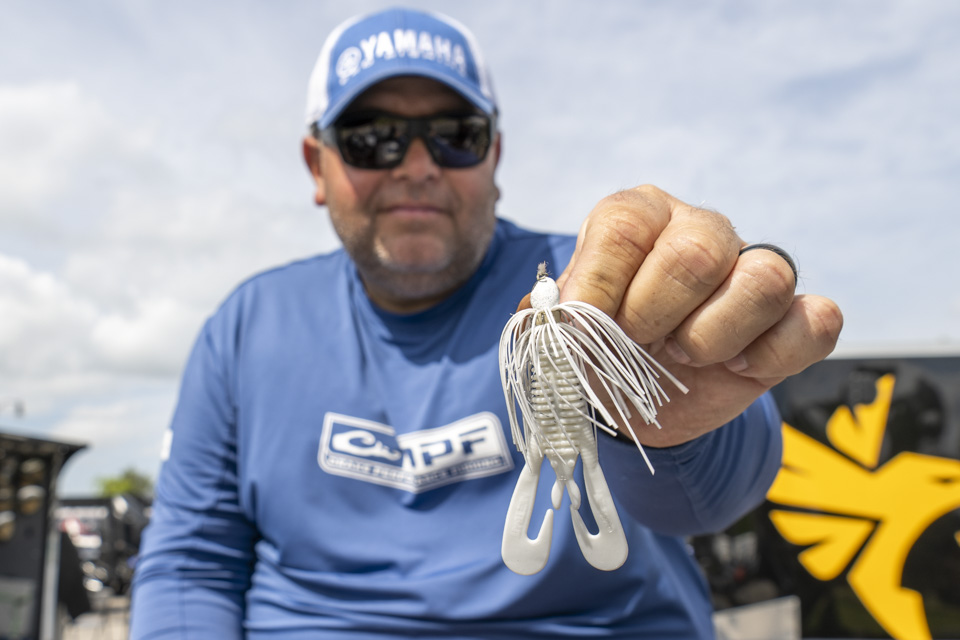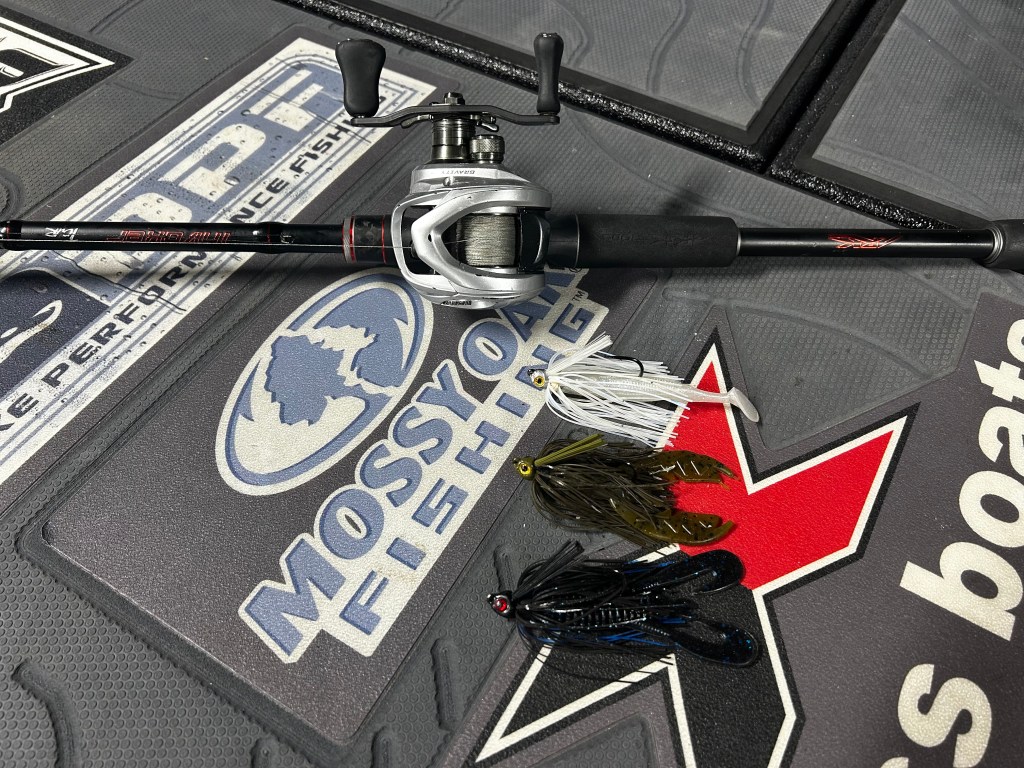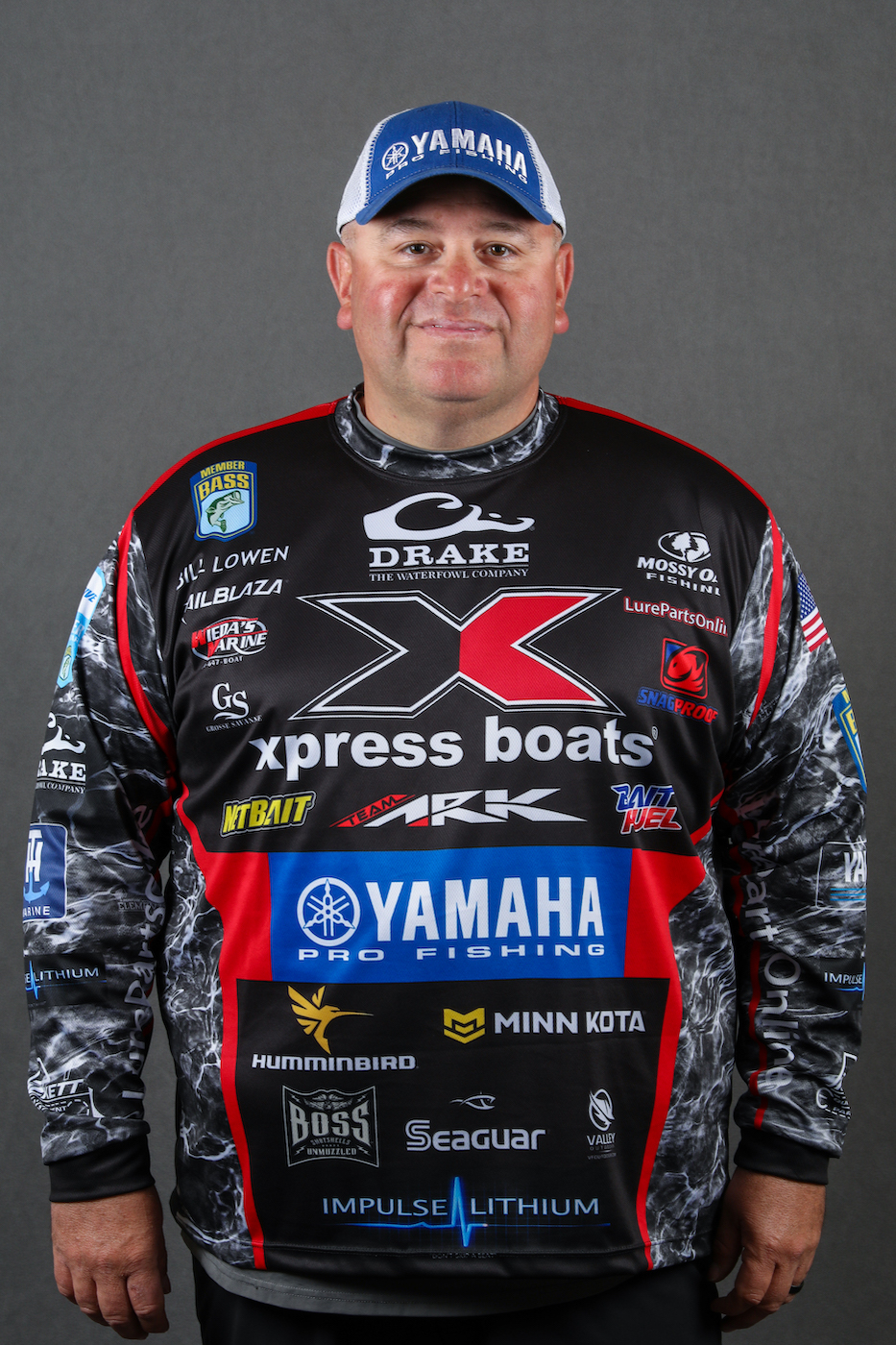
You may have heard … I love throwing a swim jig.
Growing up fishing on the Ohio River, a swim jig became my go-to technique because the population of bass tends to be small, and the pressure on them can be overwhelming. There are times things like spinnerbaits and crankbaits can be too much for them, so I figured out something with a little bit more finesse.
I figured out a swim jig gave me something I can cover water with, like a reaction bait, that doesn’t have the heavy flash and the vibration of a spinnerbait or crankbait. The swim jig allows me to fish shallower than I can with those other baits too.
Over the years, I’ve figured out a system to make the most of swim jig fishing that covers the size of the jig I use, the colors I choose and the style of trailers I use. I also have figured out how to make adjustments to my trailers depending on how the fish respond to my lure during a retrieve.

Before I get into the bait itself, let’s talk about my swim jig setup first. I want a rod and reel combination that gives me leverage over the fish. When a bass eats a swim jig in shallow water, they can go crazy when I set the hook. Because of that, I use a 7-foot, 6-inch medium-heavy rod and a 7.1:1 gear ration reel. The rod allows me to move a lot of line to control a hot fish, and the 7.1:1 is the best combination of speed and power for these bites.
My rod of choice is an Ark Invoker Tour IVT76MHFC. It has the backbone I need to drive the hook home but the right kind of tip action to make precise roll casts and is soft enough to allow the fish to take the lure during a retrieve. I match that with the Ark Gravity G7 or G8 reels. The Gravity spool control system allows me to adjust it for ease of cast and distance but has all the power I need to get the fish out of cover. I fill my reels with 30-pound-test Seaguar TactX braid, the camo color helps hide it around cover. It is super strong and helps me get them out of cover every time.
Okay, let’s talk jigs. I designed a swim jig for Lure Parts Online called the Bill Lowen Signature Swim Jig, and I throw two sizes most of the time. I really use my 1/4-ounce size 75% of the time because I can reel it slowly enough to keep it in the strike zone longer and kind of flutter it around cover. If the fish are way back under docks or overhangs, or they are really deep in the grass, then I go to my 5/16-ounce size.
I carry three colors all the time — black and blue, a green pumpkin color to mimic bluegill and a white or silverish color to target shad eaters. I get asked when I throw black and blue a lot. Most people view it as a color for dirty water, but it is effective in any water clarity – even gin clear water. So I have that tied on just about everywhere I go.
I designed a series of Bill Lowen Signature skirts to go on my jigs as well. I’ve got numerous colors and styles on the Lure Parts Online website, but I really like tinsel in my swim jig skirts. The ones I use are the Bill Lowen Krystal Accent Skirts because they have the silicone colors with matching tinsel in the skirt too. You can order the heads and skirts in three-count bags and mix and match to your desire.
I use three styles of trailers on my swim jigs, a “flapping” style, a “curly, swimming” style and a “boot-tail” style. For the flapping trailers, I use a NetBait Paca Craw or Paca Chunk. Both have the same flapping claw action I want in a trailer, but the chunk is smaller and gives a more compact profile to the jig. The NetBait Mini Kickin’ B is actually my first choice of trailers overall because it has such a great swimming, curling action and for a little slimmer look. I’ll use our NetBait Twin Tail too. In the boot-tail department, I use a NetBait Lil’ Spanky or Big Spanky swimbaits depending on the size of the forage or the size of fish in the lake I’m fishing.
One tip I can give you is to watch how the fish respond to the lure to see if your color or trailer type is the correct one. If the fish bump or nip at the lure, but don’t eat it, then I have the right color to get their attention. Here, the trailer type is to aggressive or not aggressive enough, and I’ll change the trailer type. If they come up to the lure and just look at it, but do not strike at it, then the action of the trailer is enough to get their attention, but color of the jig is not right. Here, I need to try a different color.
I have cashed a lot of checks in my career on a swim jig, and I bet with a little practice, it could be a staple for you too.





